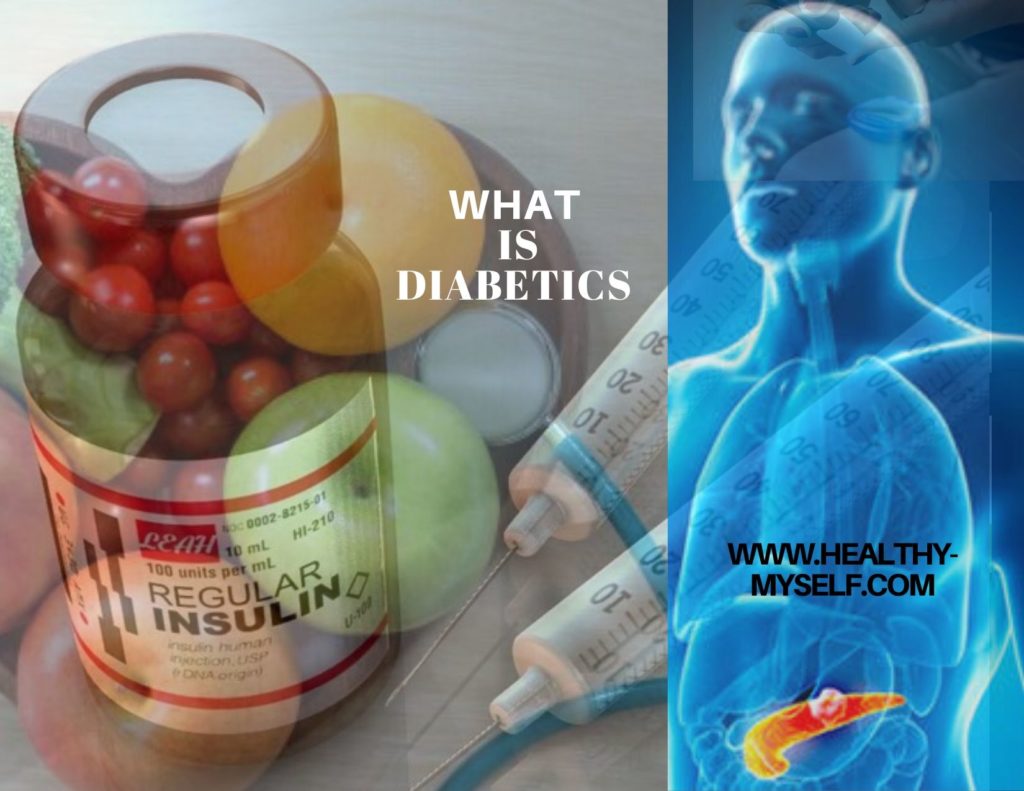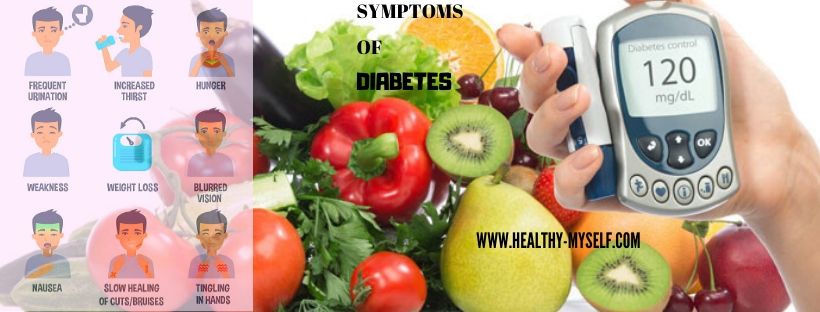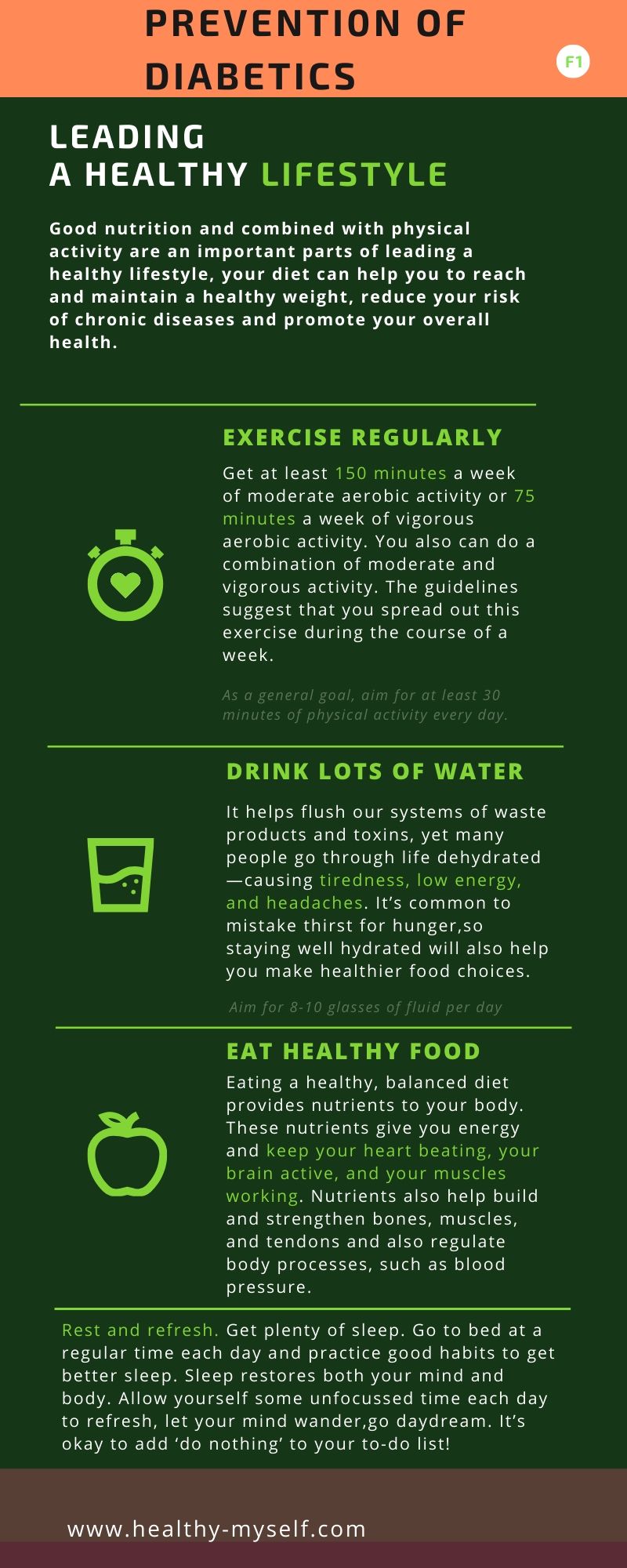Supercharge Your Health By Knowing-What is Diabetics Details On -2021- Within 7 Minutes?
What is Diabetics is the common question of every middle-age holder?
Know here What is Diabetics along with symptoms, types, causes and prevention.
So, grab one glass of water and stick here to read by only 7 minutes.
Isn’t interest and important topic?
Certainly, yes!
Please check it-now!
Nowadays it is not the old aged problem, it is now a middle-aged even teenage problem.
Surprisingly sometimes children are getting this problem.

Contents
1. What is diabetes?

Diabetes is a serious condition and where your blood glucose level is too high.
There are two main types of diabetes.
They are Type 1 And Type 2.
They’re different conditions, but they’re both serious.
There are some other Types Of Diabetes also available.
2. What are the different types of diabetes?
The most common types of diabetes are Type 1, Type 2, and Gestational diabetes.
2.1. Type 1 diabetes–
If you have Type 1 diabetes, your body does not make insulin.
Your immune system disturbed and slowly destroys the cells in your pancreas which make insulin.
Type 1 diabetes is usually diagnosed in children and young adults, although it can appear at any age and at any stage.
People with type 1 diabetes need to take insulin every day.
To stay alive otherwise, so many problems arise.
2.2. Type 2 diabetes–
If you have Type 2 diabetes then your body does not make or use insulin well.
You can develop type 2 diabetes at any age but even during childhood.
However, this type of diabetes occurs most often in middle-aged and older people.
Type 2 is the most common type of diabetes.
This type can be improved by taking Superfood and maintain lifestyle.
2.3. Gestational diabetes–
Gestational diabetes develops in some women when they are pregnant.
Most of the time, this type of diabetes goes away after the baby is born.
However, if you’ve had gestational diabetes then you have a greater chance of developing type 2 diabetes later in life.
So, take care and consult to doctor.
3. Causes of Diabetics

3.1. Causes of type 1 diabetes:
Type 1 diabetes occurs when the immune system attacks and destroys the insulin-producing cells in the pancreas which we call the Beta-cell.
As a result, the body is left without enough insulin to function normally i.e. it becomes insulin deficient.
This is called an autoimmune reaction, because the body attacks itself and produces antibodies to its own insulin-producing cells, thereby destroying them.
Researchers don’t exactly know why this process is activated in some people.
Apart from a possible genetic predisposition, the following triggers may be involved:
- Viral or bacterial infection
- Chemical toxins in food
When a person with type 1 diabetes develops symptoms, most of the beta cells in the pancreas have already been destroyed.
https://b59b3f4mfdq-ynew0gwc5rix4v.hop.clickbank.net/
3.2. Causes of type 2 diabetes
The causes of type 2 diabetes are multifactorial and complex.
But even though there is no single cause, there are some well-known predisposing factors – the most overwhelming being obesity and a family history of type 2 diabetes.
Type 2 diabetes is the result of both insulin resistance.
When the cells don’t respond well to insulin and can’t easily take up glucose from the blood and progressive beta-cell damage.
It results in too little insulin being secreted by the pancreas.
By the time a person is diagnosed with type 2 diabetes, up to 50% of the beta cells in the pancreas have usually been damaged.
Your risk of getting type 2 diabetes is higher if:
- There’s a history of diabetes in your family
- You’re middle-aged or older
- You’re overweight or obese
- You’re middle-aged and have high blood pressure (hypertension)
- You’ve given birth to a child weighing more than 4.5kg, was diagnosed with gestational diabetes or have/had a polycystic ovarian syndrome (PCOS)
Type 2 diabetes is also associated with insufficient physical activity, poor diet, extra weight carried around the waist and not maintaining a proper lifestyle.
And no exercise or physical work.
3.3. Causes of gestational diabetes
It isn’t known exactly why some women develop gestational diabetes, but there is often a positive family history
4. A symptom of diabetics:

The following symptoms are associated with diabetes.
They reflect higher-than-normal blood glucose levels and it is called hyperglycemia.
They may or may not be present when a diagnosis of diabetes is made and they may also occur when a person’s diabetes is not well controlled.
And there is hyperglycemia i.e.high blood sugar.
- fatigue, drowsiness
- an increase in the volume and frequency of urination
- intense thirst
- excessive hunger
- unexplained weight loss
- blurred vision
- slow healing
- genital and bladder infections
- tingling in the fingers or feet
- irritability
If any or several of these symptoms occur, consult your physician.
If the symptoms are severe, get yourself to the hospital.
The symptoms of Type 1 diabetes can appear progressively or suddenly.
Diabetes doesn’t always present the same way, with the same intensity or with all these symptoms.
The symptoms of prediabetes are usually absent.
When present, they may be similar to those of a person with diabetes.
5. Prevention Of Diabetics

Simple Steps To Preventing Diabetics-
5.1. By Weight control-
Excess weight is the single most important cause of type 2 diabetes.
Being overweight increases the chances of developing type 2 diabetes seven-fold.
Being obese makes you 20 to 40 times more likely to develop diabetes than someone with a healthy weight.
So, Lose your weight.
5. 2. Get moving—and do physical exercise–
Inactivity promotes type 2 diabetes.
Working your muscles more often and making them work harder improves their ability to use insulin and absorb glucose.
This puts less stress on your insulin-making cells.
So trade some of your sit-time for fit-time.
Long bouts of hot, sweaty exercise aren’t necessary to reap this benefit.
This amount of exercise has a variety of other benefits as well.
And even greater cardiovascular and other advantages can be attained by more, and more intense, exercise.
You can move by the special Footwear-
You can read-
https://healthy-myself.com//weight-loss-tips/
5.3. Away From Television-
watching appears to be an especially-detrimental form of inactivity.
Every two hours you spend watching TV instead of pursuing something more active increases the chances of developing diabetes by 20%.
it also increases the risk of heart disease upto-15% and early death is approx 13%.
The more television people watch, the more likely they are to be overweight or obese, and this seems to explain part of the TV viewing-diabetes link.
The unhealthy diet patterns associated with TV watching may also explain some of this relationship.
5.4. Take a Balanced Diet-
Take whole grains and whole-grain products.
Skip the sugary drink, coffee, and tea.
Take red meat very less in quantity.
You can take fish especially small ponds fishes.

5.5. Don’t smoke–
Add type 2 diabetes to the long list of health problems linked with smoking.
Smokers are roughly 50% more likely to develop diabetes than nonsmokers, and heavy smokers have an even higher risk.
5.6. Light to moderate alcohol consumption–
Evidence has consistently linked moderate alcohol taking with reduced risk of heart disease.
The same may be true for type 2 diabetes.
Moderate amounts of alcohol—up to a drink a day for women, up to two drinks a day for men—increases the efficiency of insulin at getting glucose inside cells.
If you already drink alcohol, the key is to keep your consumption in the moderate range, as higher amounts of alcohol could increase diabetes risk.
5.7. Manage your Blood Pressure Level:
You should not take heavy and rich foods with spicy foods.
Try to take green vegetables with continuous drinking water.
Your Blood Pressure Should not be above -80/120 mg of Hg.
Time to time you have to check Blood Pressure By your healthcare provider or Doctor.
5.8. Control Your Cholesterol level-
Another thing to control is Cholesterol in blood.
Cholesterol levels for adults-
You can take this supplement also-
- Total cholesterol levels less than 200 milligrams per deciliter (mg/dL) are considered desirable for adults. A reading between 200 and 239 mg/dL is considered borderline high and a reading of 240 mg/dL and above is considered high.
- LDL cholesterol levels should be less than 100 mg/dL. Levels of 100 to 129 mg/dL are acceptable for people with no health issues. A reading of 130 to 159 mg/dL is borderline high and 160 to 189 mg/dL is high.
- HDL levels should be kept higher.
- A reading of less than 40 mg/dL is considered a major risk factor for heart disease.
- A reading from 41 mg/dL to 59 mg/dL is considered borderline low. The optimal reading for HDL levels is 60 mg/dL or higher.
Cholesterol levels for children-
By comparison, acceptable levels of total cholesterol and LDL cholesterol in children are as below-
An acceptable range of total cholesterol for a child is less than 170 mg/dL.
Borderline high total cholesterol for a child ranges from 170 to 199 mg/dL. Any reading of total cholesterol over 200 in a child is too high.
- A child’s LDL cholesterol levels should also be lower than an adult’s.
- The optimal range of LDL cholesterol for a child is less than 110 mg/dL.
- Borderline high is from 110 to 129 mg/dL while high is over 130 mg/dL.
6. Conclusion

- Do exercise daily at least 1/2 hr. and keep away from diabetics.
- Morning walk is one of the best ways to control Diabetes.
- Drink at least 8 -10 glasses of water with regular intervals sip by sip.
- 6-7 hrs. of sleep is necessary/day for body and mind relaxation.
- Eat fibers and fresh green vegetables also keep away from Diabetes.
For morning work exercise use this Footwear-
MEDLIFE Women’s PU Diabetic & Orthopedic Footwear- Brown (Size 4-10)You can read here also-https://simple.wikipedia.org/wiki/Diabetes_mellitus
I think you have enjoyed the post a lot.
I’d like to grow my readership.
Can you help me out by sharing this blog post with your family, friends, and colleagues & neighbors?
What other ideas can you add to this list that I may have not mentioned please write to us?

